Slow Fashion: The Second-Hand Clothing Stores of Paris

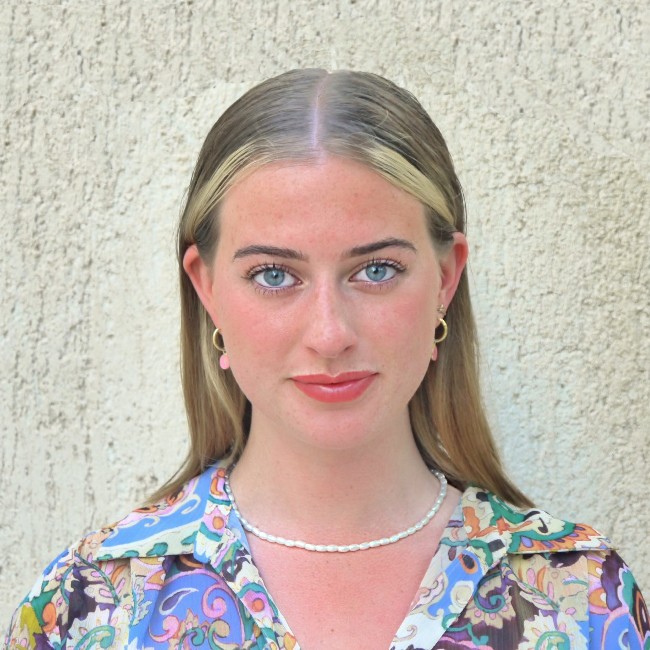
As the fashion capital of the world, Paris has been pivotal in the world of fashion since the first haute couture (“high dressmaking”) house was founded by Charles Frederick Worth in 1858. Worth was in fact an Englishman, but the influence of his exclusive luxury needlework was such that haute couture became synonymous with Paris, and the city has been a city of high-class fashion since the late 19th century. As a result, the world’s most esteemed designers are drawn to work here, and many brands operate their headquarters here. Think Chanel, Louis Vuitton, Christian Dior, Givenchy, Saint Laurent, Christian Louboutin, Hermès, Balmain, Jean Paul Gaultier, Hermès, Chloé, and Céline, to name a few.
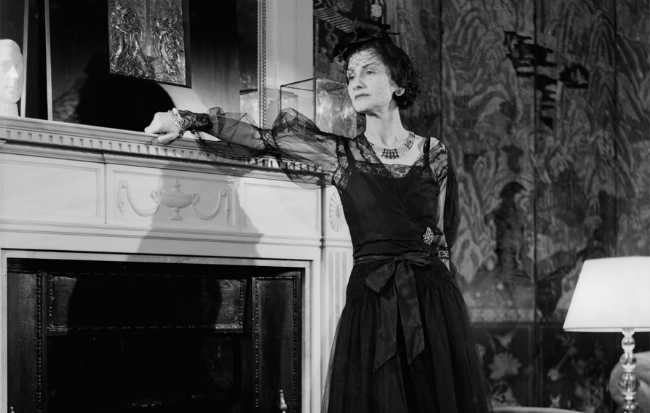
Coco Chanel at the Ritz Paris. Photo courtesy of the Ritz Paris
The fashion industry is crucial to the global economy. More than 75 million people worldwide are employed by the fashion sector and it has a global market value of over $2.5 trillion. The industry has seen rapid expansion in recent years due to the introduction of fast fashion and its compressed production cycles with the manufacturing of apparel doubling between 2000 and 2014. However, despite purchasing 60% more clothing in 2014 than in 2000, customers only wore the items for half as long. This damaging “can’t-wear-the-same-outfit-twice” attitude is terrible for the environment; the fashion industry produces 10% of humanity’s carbon emissions and is linked to the depletion of water resources, the pollution of rivers and streams, and deforestation. Additionally, according to the UNECE, 85% of all textiles are discarded annually and end up in mass landfill. What’s more, washing clothing containing synthetic fibers releases a sizable amount of microplastics into the ocean, threatening marine life.
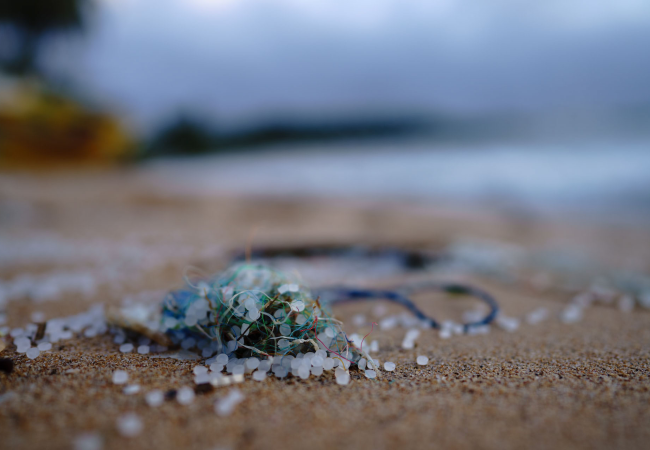
Photo by Sören Funk on Unsplash
The influence that the city of Paris has on the world of fashion is huge and as such, the city is leading the way on increased sustainability within the sector. Since the 2015 signing of the Paris Agreement at the COP 21, the French fashion industry has created policies to aid in the global goal to decrease climate emissions. François-Henri Pinault, CEO of the luxury group Kering — which owns 15 brands including Yves Saint Laurent, Gucci, and Balenciaga — drafted the Fashion Pact in 2019, a voluntary pledge for companies to reduce their carbon footprint. Fashion’s largest corporations, from sports houses Adidas and Nike to fashion houses Chanel and Hermès have now signed on.

François-Henri Pinault. Credit: Leafar / Wikimedia Commons
In 2020, before Paris’ annual Fashion Week, Emmanuel Macron invited 100 fashion designers to a conference to stress the urgency of making the industry greener, arguing that the city to invent high fashion must pave the way for its shift towards sustainability. The Fédération de la Haute Couture et de la Mode, which organizes Paris Fashion Week, has since pledged to reduce carbon emissions, cut out single-use plastics, create reusable sets and use electric bus shuttles for those involved.
A study by the nonprofit Changing Markets Foundation singled out a number of luxury brands, including France’s Christian Dior, for their lack of transparency and commitment to sustainably sourced fabrics. Thus, by 2023, every item of clothing sold in France will require a label detailing its precise climate impact – with a similar rule expected for the rest of the European Union by 2026.
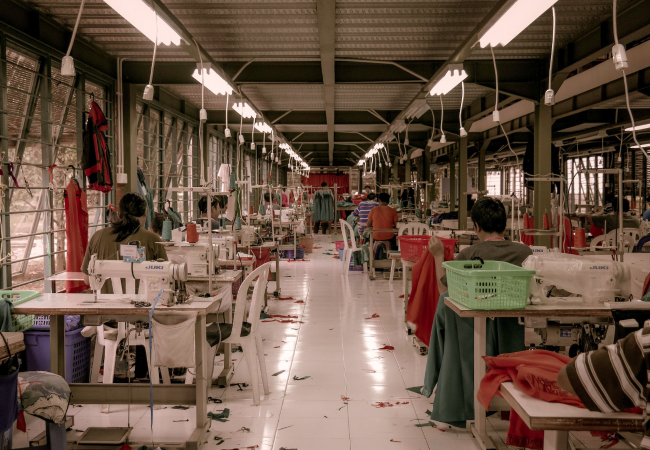
Photo by Rio Lecatompessy on Unsplash
France has taken other revolutionary steps on the journey to a carbon-neutral world, and it is a positive vision after decades of environmental abuse. Though these decisions are made at the governing level of society, there is one profound way in which we, as ordinary citizens, can also relieve the negative impact of the fashion industry – and that is by changing our purchasing behavior and buying clothing second-hand. This reduces your garment’s carbon footprint by nearly 85% as it skips the process of textile production, which is the most ecologically damaging stage of the fast fashion cycle. It’s a simple and effective way of making a difference and fighting the climate crisis. Plus, who doesn’t enjoy the thrill of the hunt, the joy of finding gold? As they say, one man’s trash is another man’s treasure!
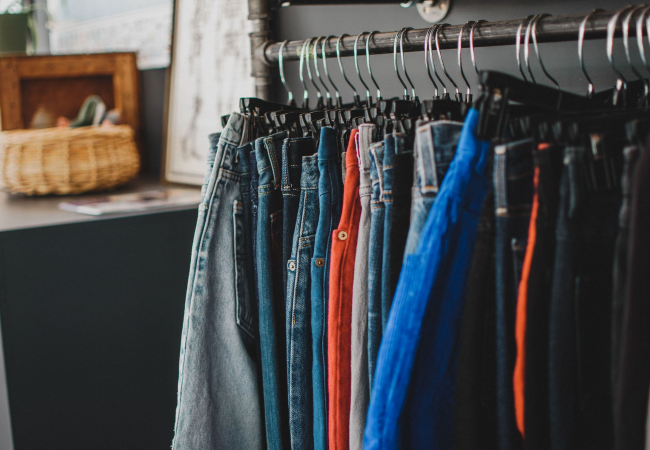
Photo by Kaylin Pacheco on Unsplash
I’m a big fan of vintage clothing. During university, I completed a project on the ethics of fast fashion and the devastating ecological and sociological impacts of our wear-once society. Through this increased awareness, I always seek opportunities to buy second-hand or sustainably produced clothing. As such, when I arrived in Paris I was overjoyed to notice a three-story friperie (the french term for a thrift store) on my road.
There are three types of second-hand clothing stores: thrift, vintage, and kilo.
A thrift store is a true treasure trove. The clothing, shoes, and accessories found in these stores are usually donated by individuals and are not pre-selected. Expect racks of assorted clothing, with prices usually within the €1-5 range. Thrift stores are larger in size, resembling warehouses rather than boutiques.
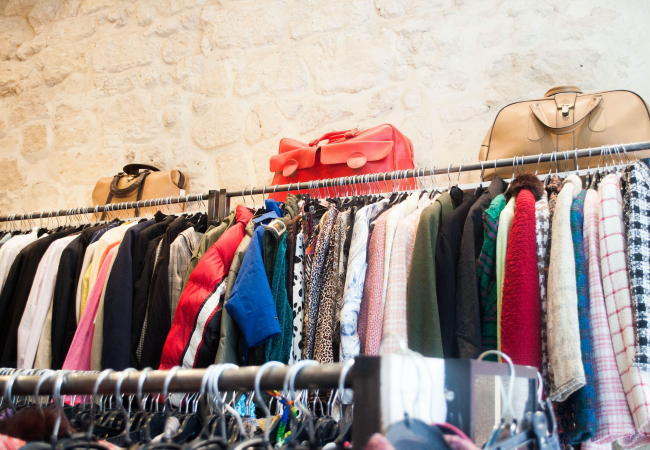
Photo by Noémie Roussel on Unsplash
The clothing you will find at a vintage store is pre-selected, older, and typically designer, meaning the prices are higher than at a thrift store. Contrary to thrift stores, vintage stores are run by knowledgeable collectors with expertise in the field. For customers, vintage stores are more manageable than thrift stores as the curators specially select the items, eliminating the excavation involved in thrifting. As a result, the shops tend to be smaller in size and are better decorated.
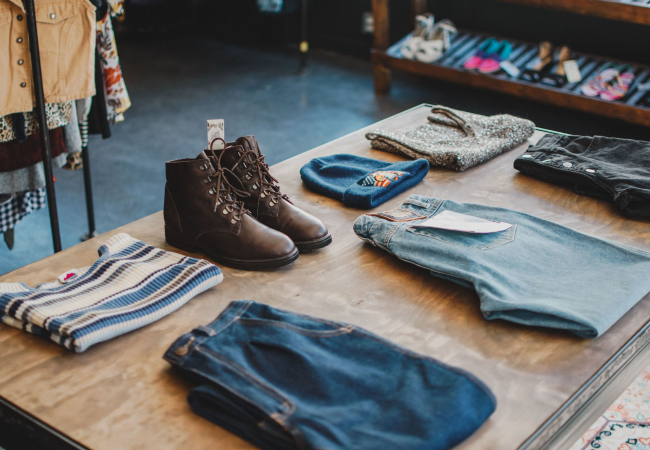
Photo by Kaylin Pacheco on Unsplash
A kilo store is a vintage store in which you pay for the weight of the clothing, rather than paying for each piece individually. Each item is color coded, and each color symbolizes a different price per kilo – hence the name. These stores contain pre-selected vintage clothing.
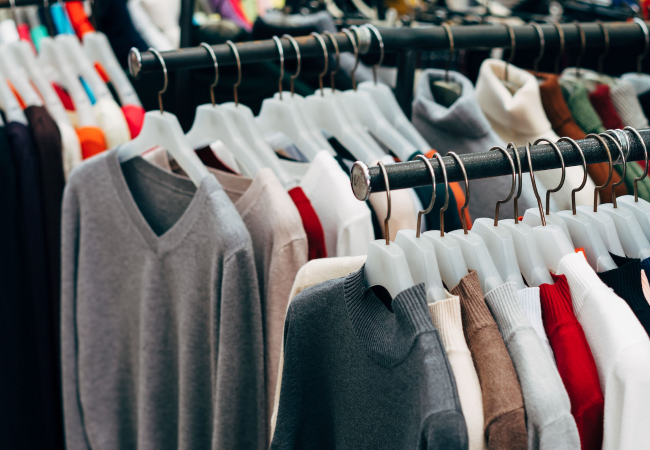
Photo by Markus Winkler on Unsplash
Thrift Stores (friperies):
While Paris is an incredible city for vintage shopping, it is not as well catered for thrift shopping. The friperie on my road belongs to the renowned chain Guerrisol, and from my research, this is the only true thrift store chain in Paris. The U.S. equivalent to Guerrisol would be Goodwill, and the British equivalent would be charity shops.
Guerrisol has been a leading institution in the French second-hand clothing market for over 40 years. Twice a week all clothing is removed and refreshed with new stock meaning that the opportunity for striking gold is endless. Every day, thousands of bargain hunters flock to Guerrisol Paris, eager to spend hours rummaging through racks in search of their dream piece. Though designer items from brands such as Burberry, Chanel or Prada will be labeled above the €1-5 region, it is still possible to find unique designer clothing for as little as a couple of euros. With seven (and soon eight) locations across Paris, Guerrisol is the holy grail for thrifting enthusiasts.
Guerrisol Marais
8 boulevard de Sébastopol, 4th
10 A.M. – 9:30 P.M. Monday to Sunday
Guerrisol Barbes
45 Boulevard de la Chapelle, 18th
5 Boulevard Barbès, 18th
10 A.M. – 7 P.M. Monday to Saturday
Guerrisol Rochechouart
17&21 Boulevard Marguerite de Rochechouart, 9th
10 A.M. – 7 P.M. Monday to Saturday
Guerrisol Place d’Italie
5 Avenue d’Italie, 13th
10 A.M. – 7 P.M. Monday to Saturday
Guerrisol Place de Clichy
13&19&34 Avenue de Clichy, 17th
10 A.M. – 7 P.M. Monday to Saturday
Guerrisol Alésia
90 Avenue Général Leclerc, 14th
10 A.M.- 7 P.M. Monday to Sunday
Vintage Stores (dépôt-vente/magasin de vetements vintage):
In my opinion, Paris has the most highly concentrated volume of top quality vintage stores in the world. To list them all would be a very long read. Below are my favorite vintage stores that I have come across on my adventures.
Rue Notre Dame de Nazareth in the 3rd arrondissement should be your first stop if you are wishing to explore the best of Paris’s vintage shops. This famous street is home to six amazing vintage stores, with each store providing a different aesthetic of clothing. From the pink, fun and girly Acid Violette, to the ultra retro Relique with its 70s theme.
Relique
1 Rue Notre Dame de Nazereth, 3rd
11 A.M. – 7 P.M. Tuesday to Saturday
12 Noon – 6 P.M. Sunday
Acid Violette
29 Rue Notre Dame de Nazareth, 3rd
11:30 A.M. – 7:30 P.M. Tuesday to Sunday
Rolling Fripe
33 Rue Notre Dame de Nazareth, 3rd
11 A.M. – 7 P.M. Tuesday to Saturday
12 Noon – 7 P.M. Sunday
At Dawn
60 Rue Volta, 3rd
1:30 P.M. – 7:30 P.M. Monday to Saturday
Piou Piou
50 Rue Notre Dame de Nazareth, 3rd
12 Noon – 7 P.M. Wednesday to Sunday
Compil
34 Rue Notre Dame de Nazareth, 3rd
11 A.M. – 7 P.M. Tuesday to Sunday
Further vintage stores across Paris include:
Free’p’star (multiple locations)
52&61 Rue de la Verrerie, 4th
10 A.M. – 8 P.M. Monday to Saturday
12 Noon – 8 P.M. Sunday
20 Rue de Rivoli, 4th
11 A.M. – 8 P.M. Monday to Sunday
66 Rue Saint-Antoine, 4th
11 A.M. – 8 P.M. Monday to Sunday
51 Rue Saint-Denis, 1st
10 A.M. – 8 P.M. Monday to Saturday
12 Noon – 8 P.M. Sunday
Classy Dame
175 Rue de la Convention, 15th
10:30 A.M. – 7:30 P.M. Monday to Saturday
Bobby
89 Rue Reaumur, 2nd
11 A.M. – 7:30 P.M. Monday to Saturday
Chez Snow Bunny
12 Rue Dupetit-Thouars, 3rd
1:30 P.M. – 7:30 P.M. Monday to Sunday
NUOVO
130 Rue de Turenne, 3rd
12:30 P.M.- 7:30 P.M. Sunday – Friday
11:00 A.M. – 8:00 P.M. Saturday
Opulence Luxury & Vintage
107 Rue Reaumur, 2nd
1 P.M. – 7 P.M. Tuesday to Friday
Lorette & Jasmin
6 Rue Francois Millet, 16th
2:30 P.M. – 6:30 P.M. Wednesday to Friday
11 A.M. – 6 P.M. Saturday
Kilo Stores:
To experience the fun of Paris’s best kilo stores, go to your nearest Kilo Shop – the largest kilo store chain across France.
125 Bd Saint-Germain, 6th
11 A.M. – 7:30 P.M. Monday to Saturday
2 P.M. – 7:30 P.M. Sunday
65&69-71 Rue de la Verrerie, 4th
11 A.M. – 7:30 P.M. Monday to Saturday
2 P.M. – 7:30 P.M. Sunday
10 Bd Montmartre, 9th
11 A.M. – 7:30 P.M. Monday to Saturday
2 P.M. – 7:30 P.M. Sunday
8 Bd de Magenta, 10th
11 A.M. – 7:30 P.M. Monday to Saturday
2 P.M. – 7 P.M. Sunday
23 Rue du Faubourg du Temple, 10th
11 A.M. – 7:30 P.M. Monday to Saturday
2 P.M. – 7:30 P.M. Sunday
Lead photo credit : Photo by Becca McHaffie on Unsplash
More in clothing, environment, fashion, fashion industry, kilo, thrift, vintage clothes



REPLY
REPLY